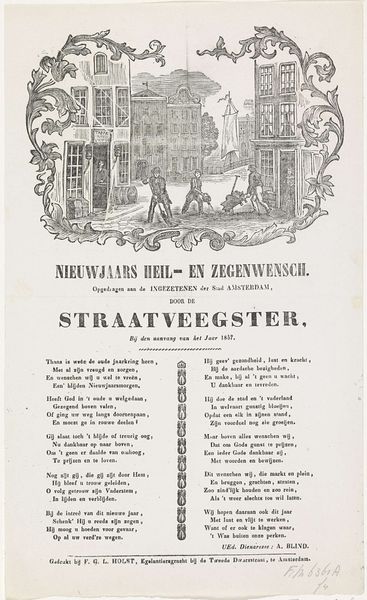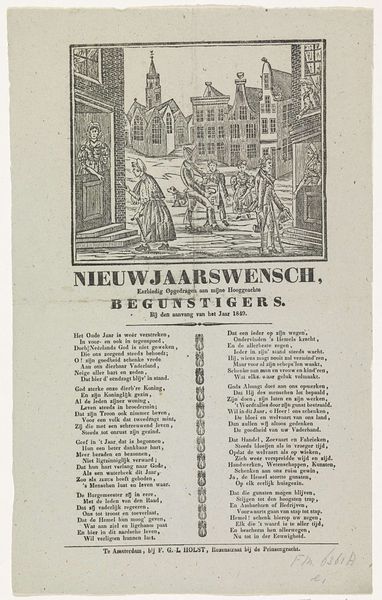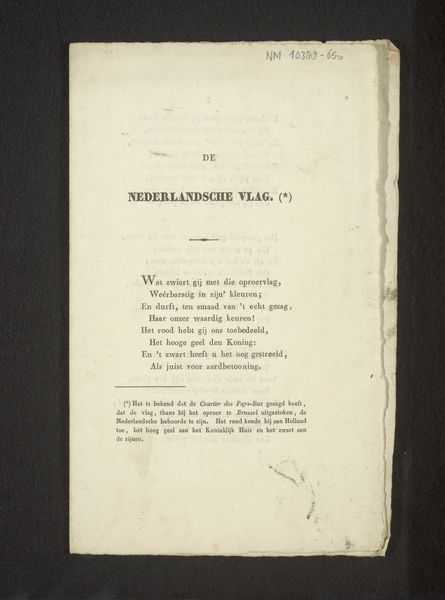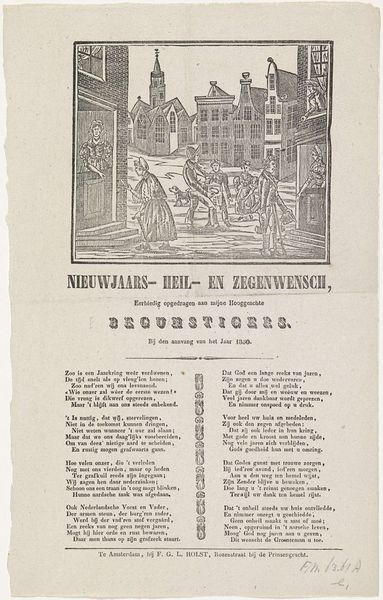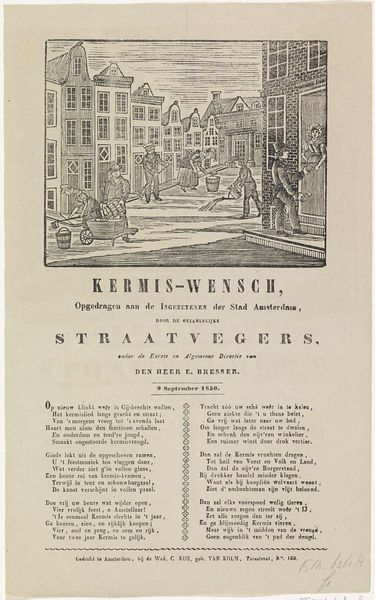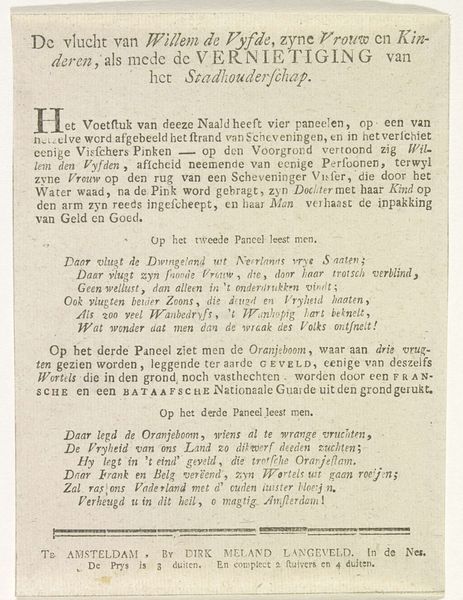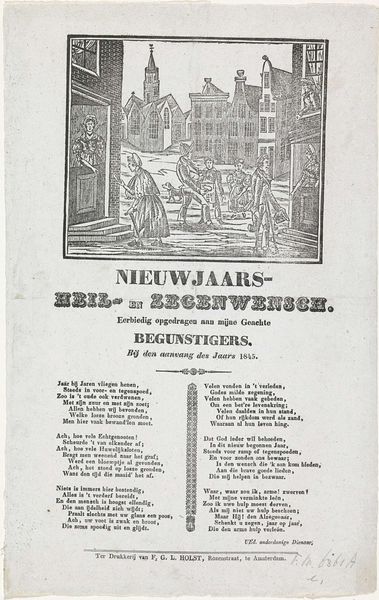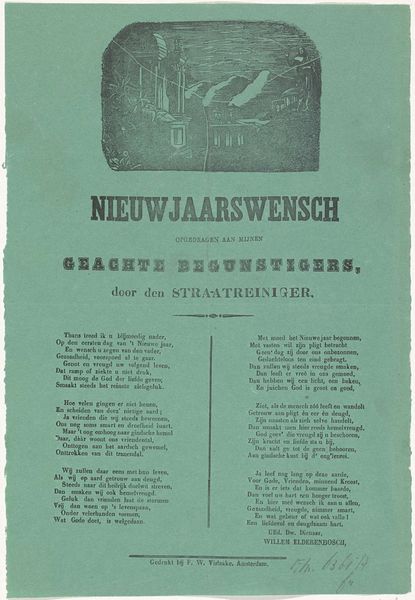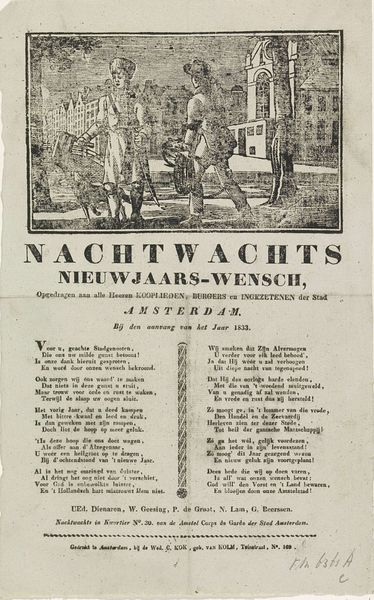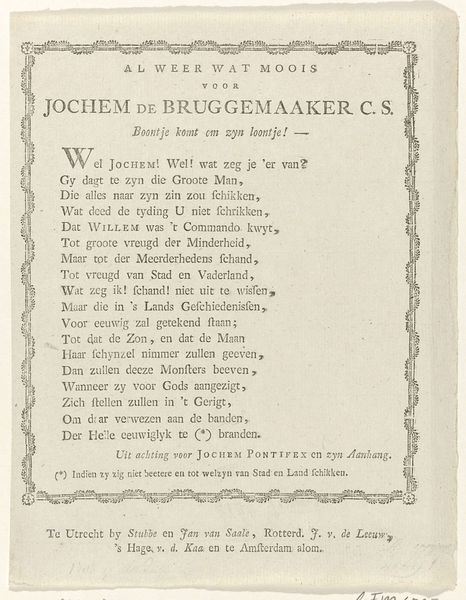
Nieuwjaarswens van de brandblussers en turfdragers van Haarlem voor het jaar 1850 1849 - 1850
0:00
0:00
print, engraving
#
narrative-art
# print
#
romanticism
#
cityscape
#
genre-painting
#
engraving
Dimensions: height 333 mm, width 218 mm
Copyright: Rijks Museum: Open Domain
Curator: Here we have a New Year’s card from the firefighters and peat carriers of Haarlem, dating to 1850. It's an engraving, a print, made by Hermanus Numan, and it's held at the Rijksmuseum. Editor: My goodness, it's almost a cartoon strip – very top-heavy and with a strangely celebratory air given that blazing inferno in the little image right at the top. Curator: Well, it was customary for guilds and civic organizations to present these sorts of greetings to prominent citizens at the start of the year. It was a way of soliciting patronage. This example depicts the guildspeople in action, putting out a fire against the backdrop of Haarlem. Editor: Soliciting patronage... Right in the middle of battling a fire, these brave souls took a moment to think, "A little money to wet our whistles?" Curator: It’s more nuanced than that. These cards reminded the city's elite of the essential services provided, especially during a time when cities were still very susceptible to devastating fires. It subtly reinforces their value and perhaps justifies the need for municipal support. It shows firefighters, yes, but it also shows community cohesion in the face of a clear existential risk to all of its burghers. Editor: So a humble-brag? The building seems very aflame, by the way, judging by all that smoke. And underneath that scene, a load of pious writing. Is that poetry? Curator: Yes, it is verse, typical for these cards. It’s a New Year’s wish for health, prosperity, and divine protection, not just for the recipients, but also for the city itself. It underscores the deeply intertwined fates of the firefighters and the citizens they served. The "turfdragers" reference would emphasize this as peat fuel was essential to city economies, especially in a landscape with limited forestry. Editor: Interesting that it comes across as equal parts earnest appeal, municipal PR and even—if I might say so—an implicit threat. Curator: Perhaps that intersection makes it a particularly fascinating artifact from its time. It demonstrates an elaborate negotiation between social classes, economic interests, and the ever-present spectre of urban disaster. Editor: It's a bit jarring, and so interesting – thank you for adding context. Now I find myself thinking of civic responsibility and civic duty differently – not in such sterile terms.
Comments
No comments
Be the first to comment and join the conversation on the ultimate creative platform.



